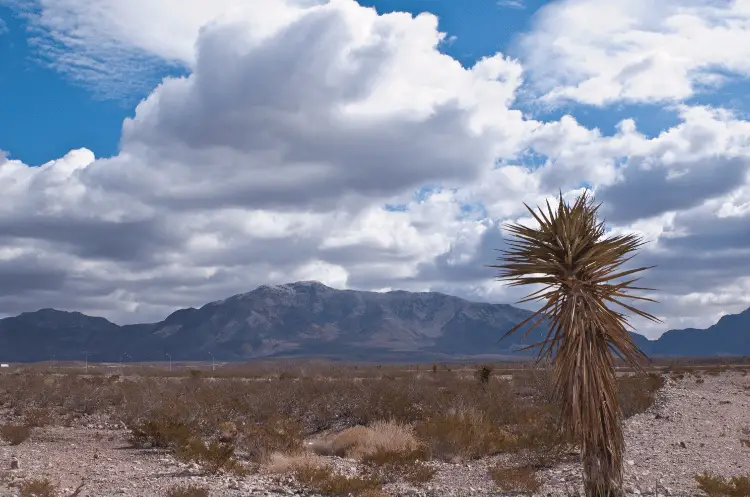We strive to provide you with authoritative, trustworthy, and expert advice. In doing so, the staff at texaswalkabout.com performs extensive research, editing, and fact checking to every post on this webiste. If you feel that this article can improve, please feel free to reach us at staff@texaswalkabout.com
The State of Texas is popular for many things, whether it’s the wide open spaces, the amazing culture, or the rich history.
However, like other Southern States, many people associate Texas with high temperatures — and you’d be correct for thinking that! This brings us to today’s question: Why is it so hot in Texas?
The main reason behind Texas’ climate is its geographical location, as temperatures get hotter as you get closer to the equator. However, other factors can also play a role in Texas’ weather, such as its terrain, humidity, wind patterns, climate change, and more!
In this article, we’ll take a closer look at the weather in Texas as well as the aspects that affect it. So without further ado, let’s dive right in!
7 Reasons Why It’s Quite Hot in Texas
Temperatures in Texas can be quite hot, especially in the summer. Here’s a quick look at the different factors that cause it:
1. Geographical Location
Let’s start with the primary reason why Texas is hot. The Lone Star State is located in the Southern United States, which is a region known for its hot summers.
This is because southern states are closer to the equator, and the closer we head toward that region, the more likely for temperatures to be quite hot.
One exception to this rule is latitude. The further we are from the earth’s surface, the less concentrated the heat will be.
While Texas has some mountains, the majority of the state’s urban regions are located at low altitudes, so temperatures there are relatively high.
2. Climate Zone
Every region around the world has a distinct climate, which is different from weather that can change multiple times within the same day.
When it comes to Texas, the majority of the state has a semi-arid climate, and slowly shifts to arid as we head west of the state.
These climate zones are influenced by several weather factors, including jet streams and the Bermuda High-Pressure system
Arid and semi-arid regions receive less annual rainfall when compared to other regions of the United States. Since rainfall is associated with heat dissipation and creates a cooling effect through evaporation, the heat remains fairly trapped in Texas.
3. Terrain

Texas is a huge state with a variety of terrain features, such as vast plains, high mountains, and large stretches of the Chihuahuan Desert.
While these aspects add to the landscape variety of the state, mountains can trap heat, while deserts can reflect it back into the atmosphere.
These factors raise temperatures significantly in some parts of Texas, which ends up raising the average temperature of the state.
4. Humidity
Humidity describes the amount of water vapor present in the air in a given location and is usually measured in precipitation rate.
The humidity in Texas is mainly affected by the Gulf of Mexico. During the summer, the warm air flows above the gulf, so it holds more moisture, which is transported back inland.
High humidity ends up trapping temperature and increases the effects of heat, as you feel you’re “breathing water”.
As you might’ve expected, this effect becomes less prominent as we head far into the mainland and away from the coast, which is why regions like the Hill Country have a more pleasant summer.
5. Wind Patterns
Another factor that also contributes to Texas’ hot weather is the direction in which the wind blows.
While Texas receives cool winds from the North, the prevailing winds in the state are the ones coming from the south.
This means that Texas is often affected by hot, humid air carried all the way through the gulf, which also raises the average temperature of the state.
6. Climate Changes
If you live in Texas, you’ve probably noticed that summers are getting hotter by the year. This is actually true and happens mainly due to climate changes that increase average temperatures all over the world.
In fact, official reports and data show that the average temperature in Texas has increased by around 0.11°F per decade since 1895, totaling an increase of around 1.4 to 1.6°F.
This average increase causes longer-lasting and more frequent heat waves all over the year in Texas, especially in the summer.
7. Weather Events
Texas is also prone to a wide range of weather events, and some of them end up affecting the temperature significantly.
This includes wildfires, which raise the state’s temperature through a phenomenon known as the “heat island effect” where the areas surrounding the fire become warmer.
Besides its direct impact, it causes increased energy consumption for air conditioning too, which leads to power grid stress and failure.
How Hot Can Texas Get?
Temperatures can get quite hot in Texas, especially in the summer. For example, the average temperature in Dallas, Texas peaks at around 96°F. However, heat waves and exceptionally hot days can be as high as 102°F, but rarely above that.
With that being said, Texas can get a lot hotter than the average peak temperature. For instance, the hottest temperature ever recorded in Texas occurred twice in history, according to records from the National Oceanic and Atmospheric Administration.

The first incident was on August 12, 1936, in Seymour when temperatures during midday reached a scorching 120°F. On June 28, 1994, temperatures in the desert city of Monahans peaked again at 120°F.
In Dallas, the highest temperature ever recorded was actually pretty recent. On July 22, 2018, temperatures in the city peaked at 112°F. On the other hand, Texas’ largest city, Houston, reached its highest-ever recorded temperature on September 4, 2000, peaking at 109°F.
Is Texas Too Hot to Live in?
The current population of Texas is around 30 million, ranking the second highest among all US states after California, so it’s safe to say that Texas is not too hot to live in, especially with the air conditioning blasting cool air in most buildings during the summer.
However, livability in Texas highly depends on your tolerance to heat and humidity. If you’re not used to relatively hot weather, acclimating to Texas’ heat can be quite challenging but totally manageable.
What Is Texas’ Highest Temperature?
The hottest part of Texas is the Chihuahuan Desert, which is located in the southwestern part of the state and is known for its extremely hot and dry climate. There, average temperatures in July are around 97°F.
Alternatively, the hottest city in Texas is El Paso, which is technically an oasis within the Chihuahuan Desert.
The city has an average annual high of around 77.1°F, but temperatures can reach up to 96°F or higher on the hottest days of the year.
What Is Texas Average Temperature?
The average annual temperature of Texas varies significantly from one location to another, as the state is quite vast and some places can have extreme temperatures, whether hot or cold.
The average high temperature in Texas in July is around 97°F but can vary from as low as 87°F in Guadalupe Mountains Park to as high as 102°F in Falcon Lake Dam.
On the other hand, the average low temperature in Texas in January is around 40°F but can vary from as low as 27°F in Lubbock to as high as 55°F in South Padre Island.
What’s the Hottest Month in Texas?
The hottest month in Texas is usually July, which has an average high temperature of around 94°F and an average low of around 74°F.
However, this is just an average of temperatures throughout the month, as some days in June and August can be even hotter than the hottest day in July.

As previously mentioned, the hottest day ever recorded in the Lone Star State was once actually in August.
FAQs
What Is the Common Temperature in Texas?
The common temperature around Texas varies significantly depending on the location, and it can range from an average low of 45°F to more than 95°F.
A good way to get better information about specific cities in Texas is to use weather report websites like WeatherSpark.
Is Texas Hot All Year Round?
Texas isn’t hot all year round, as many locations can have temperatures dropping below 50°F during the short months of winter.
Is Texas Hot in January?
In most cases, you should expect mild winters in Texas. In January, the average temperature usually ranges between 45°F to 65°F depending on where you live.
Is Texas Hotter Than Arizona?
Although some locations in Arizona can record much hotter temperatures than Texas, the Lone Star State is still slightly hotter than The Grand Canyon State on average, according to a report by Wisevoter.
Is Texas Hotter Than California?
In summer, Texas is fairly hotter than California. However, Winters in California are slightly warmer than in Texas due to the state’s geography, as most of Texas is far from the coast.
Wrap Up
As you can see, there are various reasons why temperatures in Texas are quite high, such as climate zone, location, and terrain.
The humidity in Texas can also contribute massively to the feeling of heat, which makes the summer in coastal cities feel even hotter.

Robert is a native Texan writer for TexasWalkabout, passionate about Texas culture and food, wearing cowboy boots daily. He interviews local pitmasters and chefs, tastes and reviews innovative dishes, and explores hidden gems and iconic landmarks. Graduating magna cum laude in Cyber Security from the University of Texas at San Antonio, Robert excels academically and professionally while also being knowledgeable in Texas history and culture. After living in Texas for over 28 years, he provides first-hand and trustworthy information for all your Texas needs!

